
By Marisa Rothstein
Marisa Rothstein, an attorney and certified financial planner, is a Carolina Woman contributing editor.
In previous editions, Carolina Woman introduced you to our contributing editor who's traveling around the world for five months with a toddler in tow. Marisa has trekked through South America, Australia and Asia with her 19-month-old daughter, Sydney, and her husband, Nolan. Join them now in the final episode of their expedition.
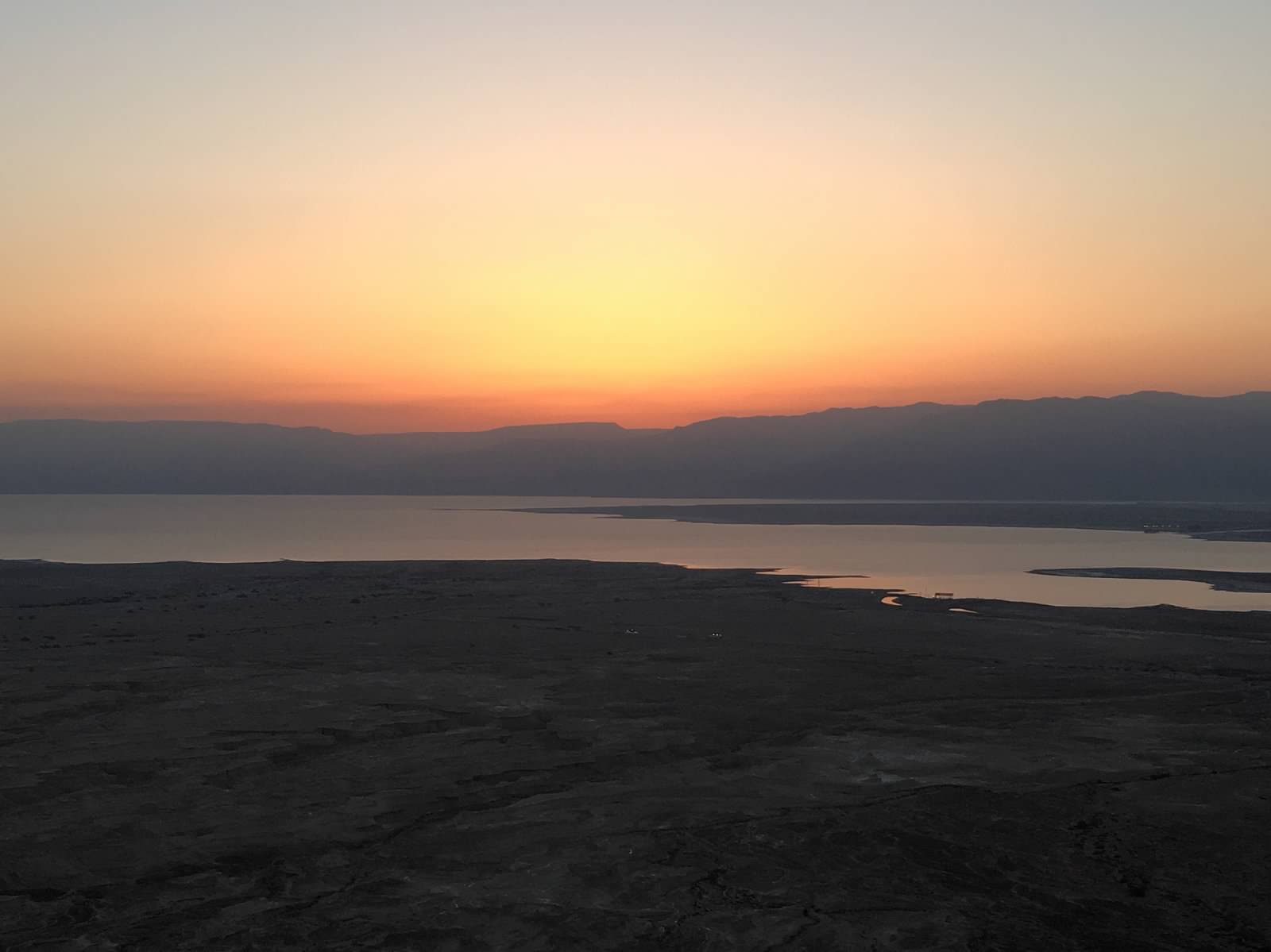 TEL AVIV
TEL AVIV
After a whirlwind trip through Japan, we boarded a plane to Israel. Our flight included a brief layover in Istanbul, where we loaded our carry-on bags with Turkish Delight, a gooey candy, and baklava. Only a few weeks later, we would be horrified to learn of a bombing at the very terminal where we had done our custom-free shopping.
We landed in the beautiful Mediterranean beach town of Tel Aviv, which is also the shopping and financial center of Israel. In the airport, we answered an immigration officer's potpourri of surprisingly personal questions: How long had we been married? What was the last holiday we celebrated? Why didn't we leave our child at home while we traveled? Earning passport stamps felt like passing the bar exam.
We arrived during one of its busiest times, Gay Pride Week, when people from all over the world keep hotels fully booked and Airbnb prices sky high. With few other affordable options, we gave the Abraham Hostel a try.
Whenever I had traveled in the past, I had typically stayed at youth hostels, which are known for their shared spaces and inexpensive lodging. Back then, I regarded bunking in a room with six other students or five giant cockroaches an exciting exploit.
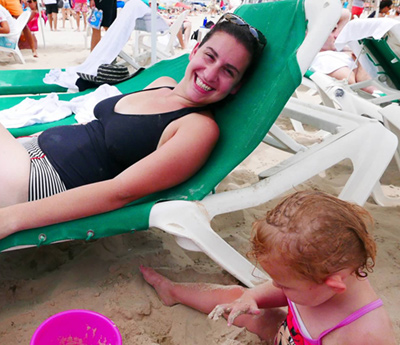 However, since having a baby, I felt I had graduated beyond the communal bathroom, if only because other travelers shouldn't be exposed to my daughter's dirty diapers. Luckily, we had managed to trek for three months without staying in cooperative lodging.
However, since having a baby, I felt I had graduated beyond the communal bathroom, if only because other travelers shouldn't be exposed to my daughter's dirty diapers. Luckily, we had managed to trek for three months without staying in cooperative lodging.
The receptionist at the Abraham Hostel checked us in and showed us to our room: an air-conditioned, one-bedroom apartment with a kitchen. To my relief, our room was far better than my memory of hostels past. Contemporary versions, I learned, offer way more than wall-to-wall bunk beds and collective toilets.
After changing out of our airplane clothes, we headed into the bright Israeli sun and to Tel Aviv's star attraction: the beach. Sydney picked up a pail and shovel from a "take one, leave one" box and buried her legs in sand while Nolan and I joined the locals in sunbathing and swimming. Hours later, sandy, tired and content, we walked back to the hostel, showered and fell into bed.
At nine the next morning, we met up with a group for a tour of the historic Tel Aviv shuk, or market. The leaders were an attractive husband and wife with a brand new baby.
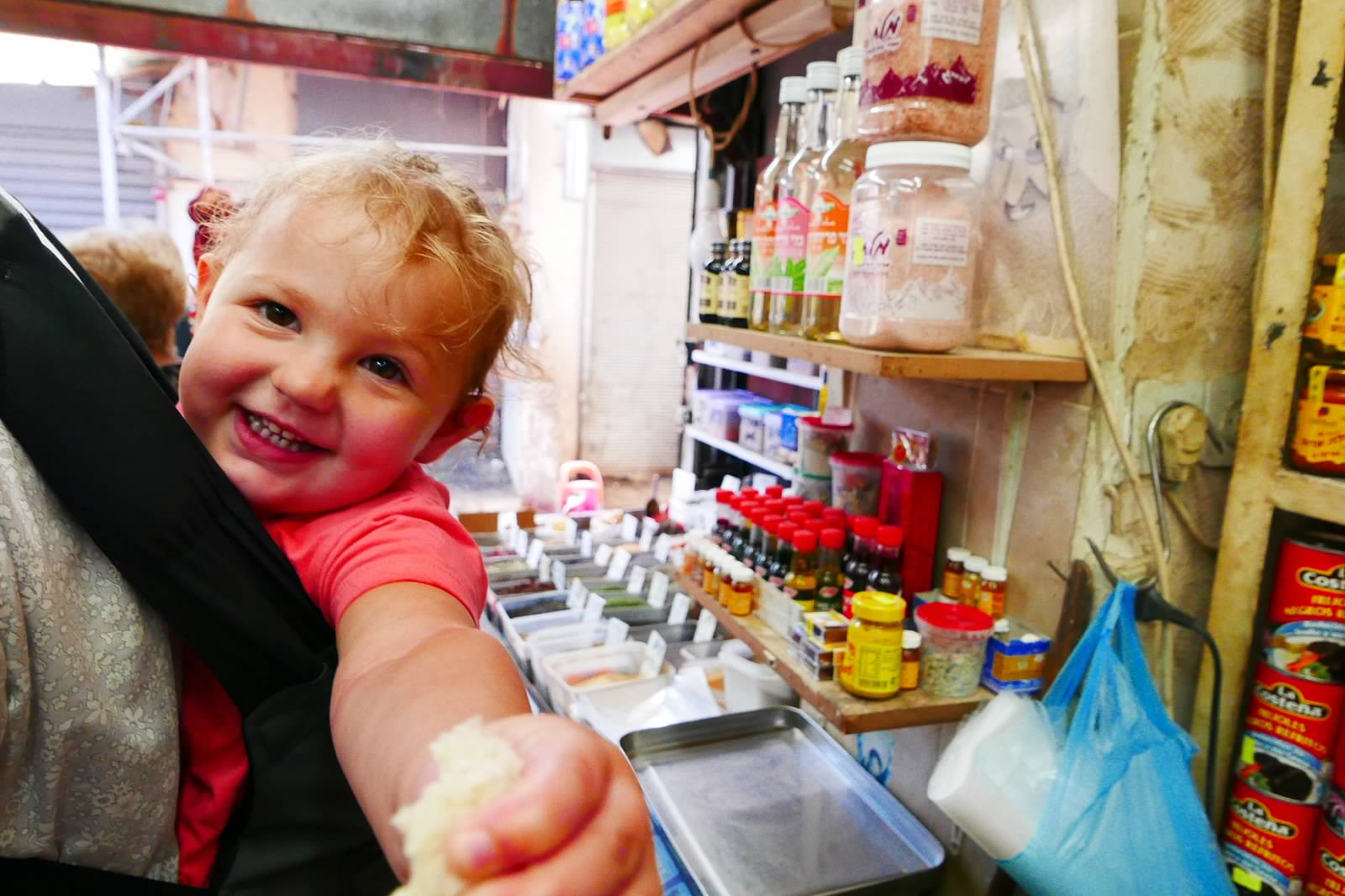 Having hurried out of the hostel without coffee, we were excited to see the dad pouring drinks from a large thermos into small paper cups. But as he passed them out, we realized that we were starting the day on a more spirited note. Fortified by the strong cherry liquor, we found the tour to be spectacular.
Having hurried out of the hostel without coffee, we were excited to see the dad pouring drinks from a large thermos into small paper cups. But as he passed them out, we realized that we were starting the day on a more spirited note. Fortified by the strong cherry liquor, we found the tour to be spectacular.
With her 5-week-old swaddled to her chest, the mom casually guided us to the best booths in the market. She introduced us to a young falafel-maker who individually fried the balls of mashed chickpeas before putting them into pitas with toppings to order. The young cook was the third generation of his family to prepare falafel in that very spot. His grandmother, who had founded the shop, kept the recipe under lock and key. She blended the falafel ingredients every night and permitted her grandson only to fry the unique mix.
We meandered through the congested booths and small specialty shops, where we sampled Middle Eastern delights, such as halva, a sesame-seed dessert. We then visited the oldest coffee shop in the shuk, where the owner served our long-awaited java and serenaded us with songs he had recently learned in his voice class.
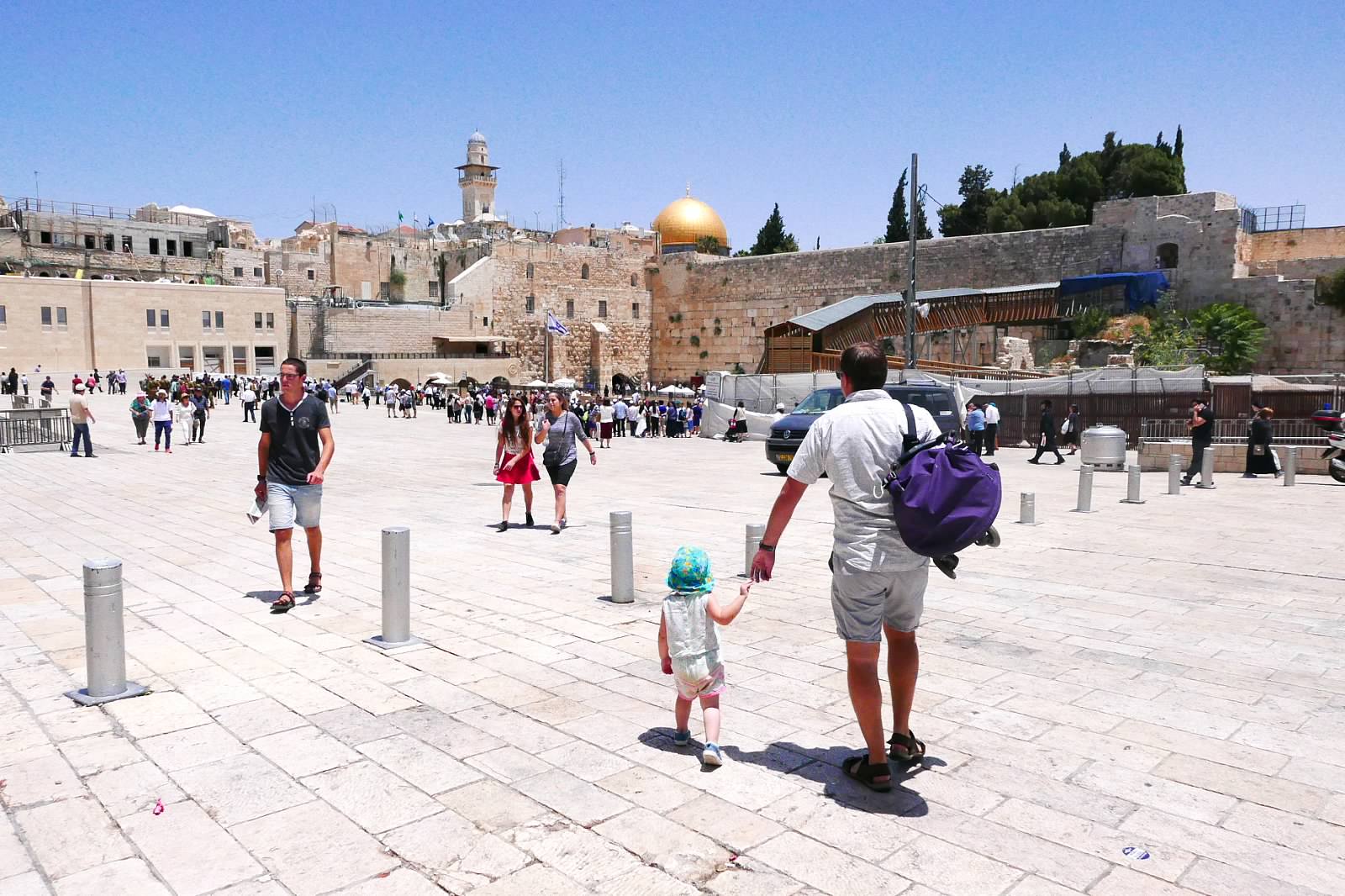 JERUSALEM
JERUSALEM
From Tel Aviv, we took a 40-minute bus ride to our next stop, Jerusalem, one of the oldest cities in the world. It's considered holy by three major religions – Judaism, Islam and Christianity.
After checking into Jerusalem's Hotel Amira, we set out for an Abraham Tours walking tour. Our ramble began just inside the city's enormous walls, built in the 16th century to protect it from invaders.
As the guide introduced himself, Sydney got comfortable on Nolan's back, where she would be riding along for the day. The other people in our group, many American families and some single European women, were excited to have a baby in the party and took turns tickling her feet.
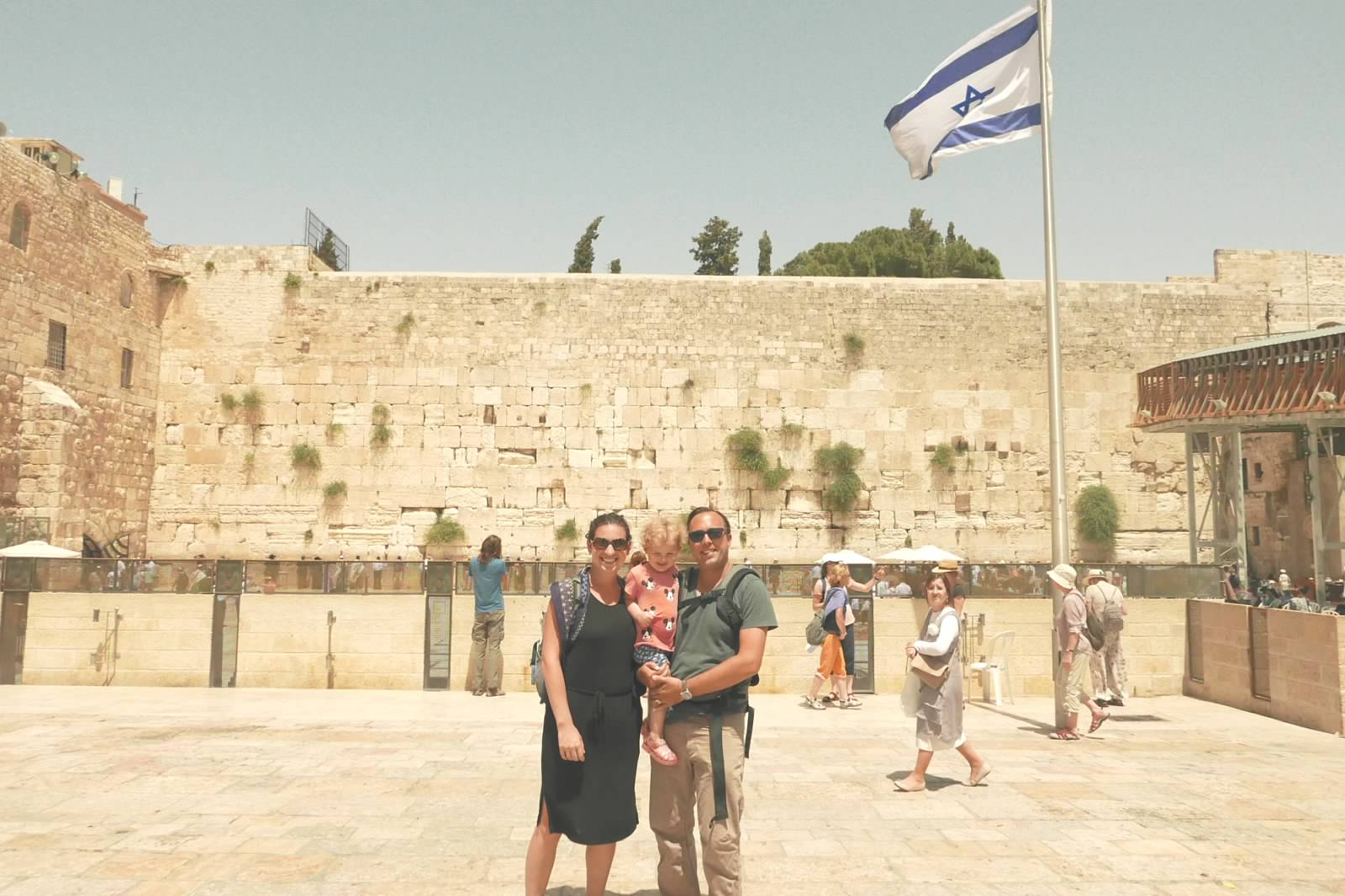 Another day, Nolan signed up for a day trip to Mt. Masada, an ancient fortress in the desert built by King Herod the Great between 37 and 31 B.C. About 100 years later, in the last stage of the First Jewish-Roman War, almost 1,000 Jewish rebels committed mass suicide rather than be captured by the Roman army waiting at the base of the fortress.
Another day, Nolan signed up for a day trip to Mt. Masada, an ancient fortress in the desert built by King Herod the Great between 37 and 31 B.C. About 100 years later, in the last stage of the First Jewish-Roman War, almost 1,000 Jewish rebels committed mass suicide rather than be captured by the Roman army waiting at the base of the fortress.
As Nolan climbed 700 steps up the mountain, Sydney and I enjoyed a girls' day. We strolled through the local shuk, picking up fresh grapes and olives, and then playground-hopped through the city, finally ending up at the Science Museum. In an enormous sandbox with complex building tools and construction helmets, Sydney made friends with Israeli children digging for treasure.
BUDAPEST
On Sunday afternoon, we packed our bags for our next destination: Hungary. After a two-hour flight, we arrived in Budapest, the capital and largest city, and checked into the magnificent Kempinski Hotel Corvinus. We relaxed in its modern, airy lobby with fresh, hot coffee and pastries. Then we ventured out to explore.
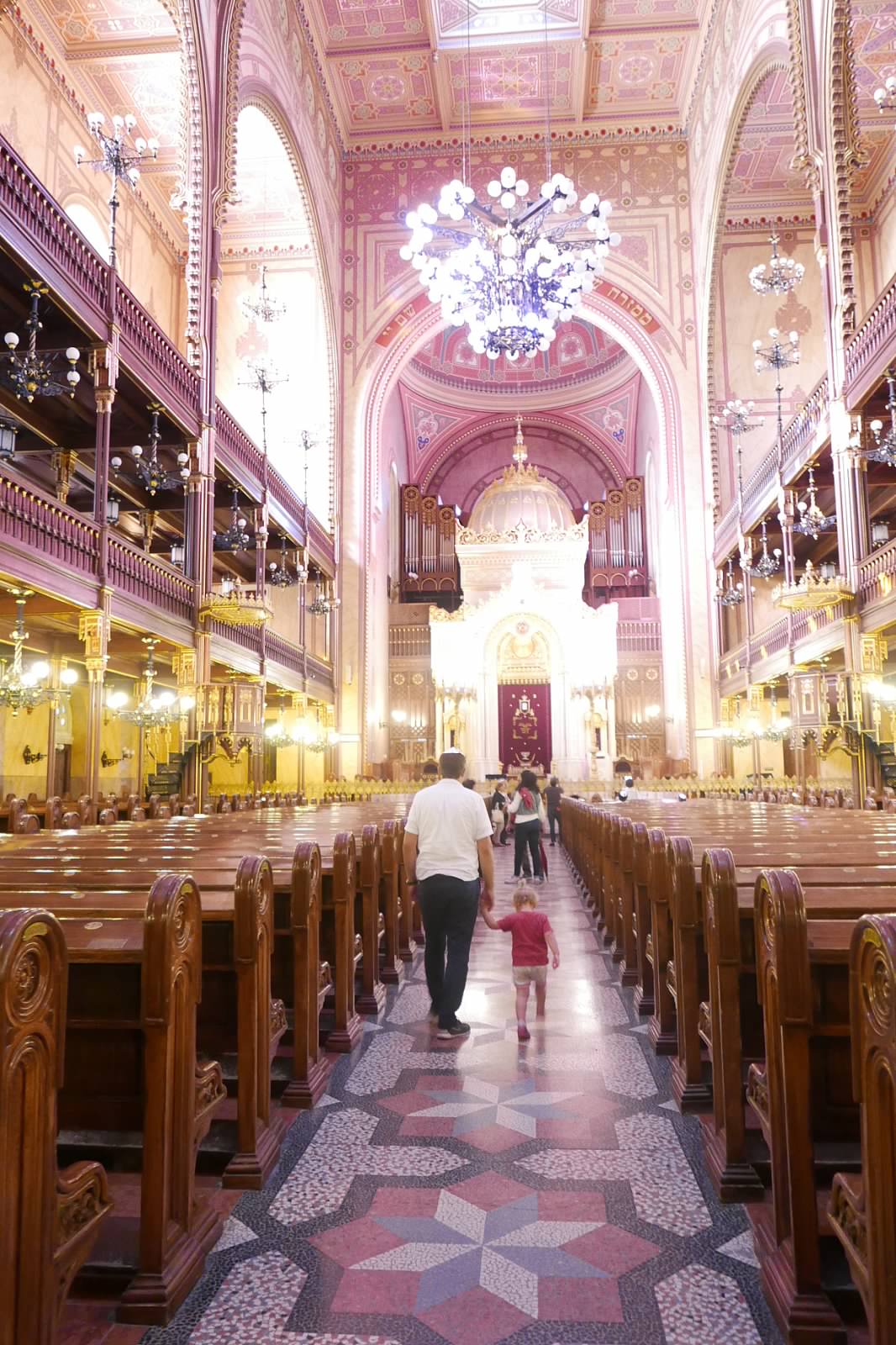 Our first stop was the Great Market Hall, Budapest's largest and oldest food emporium. Here, we picked up a long salami hanging from a butcher's counter, a wheel of Kashkaval cheese, and some crusty bread for a picnic in Varosliget City Park.
Our first stop was the Great Market Hall, Budapest's largest and oldest food emporium. Here, we picked up a long salami hanging from a butcher's counter, a wheel of Kashkaval cheese, and some crusty bread for a picnic in Varosliget City Park.
After lunch, we toured the Dohany Street Synagogue, Europe's largest. Wandering through the enormous chapel, we craned our necks, looking in awe at the high ceilings covered in bright murals. Outside, we walked solemnly through the Jewish Cemetery, resting place for thousands of Hungarians who died in the Jewish Ghetto during World War II.
As we returned to our hotel, we saw throngs of people in the park across the street. The entire city, it seemed, had descended upon it to watch the Euro Cup 2016 soccer tournament. At that moment, an enormous screen was streaming the Hungary vs. Austria match.
Unable to find an empty patch of grass to join this city-wide party, we searched for a cafe where we could watch the game and eat dinner. The only restaurant with vacant tables was a hamburger joint.
The match ended just as we cleared our French fries. Hungary won! The city erupted in screams. Exuberant fans marched past us whooping and clapping. The Hungarian national anthem echoed from one end of the spontaneous parade to the other.
In the middle of the night, we discovered why the greasy spoon had been so empty: Nolan and I had food poisoning. We had scheduled two days for touring Budapest, but were forced to spend one of them sequestered in our hotel room. The silver lining was that the three of us had time to enjoy our lovely hotel. A long hot bath; two movies on the large, flat-screen TV; and a snooze under comfy down blankets made us feel like new.
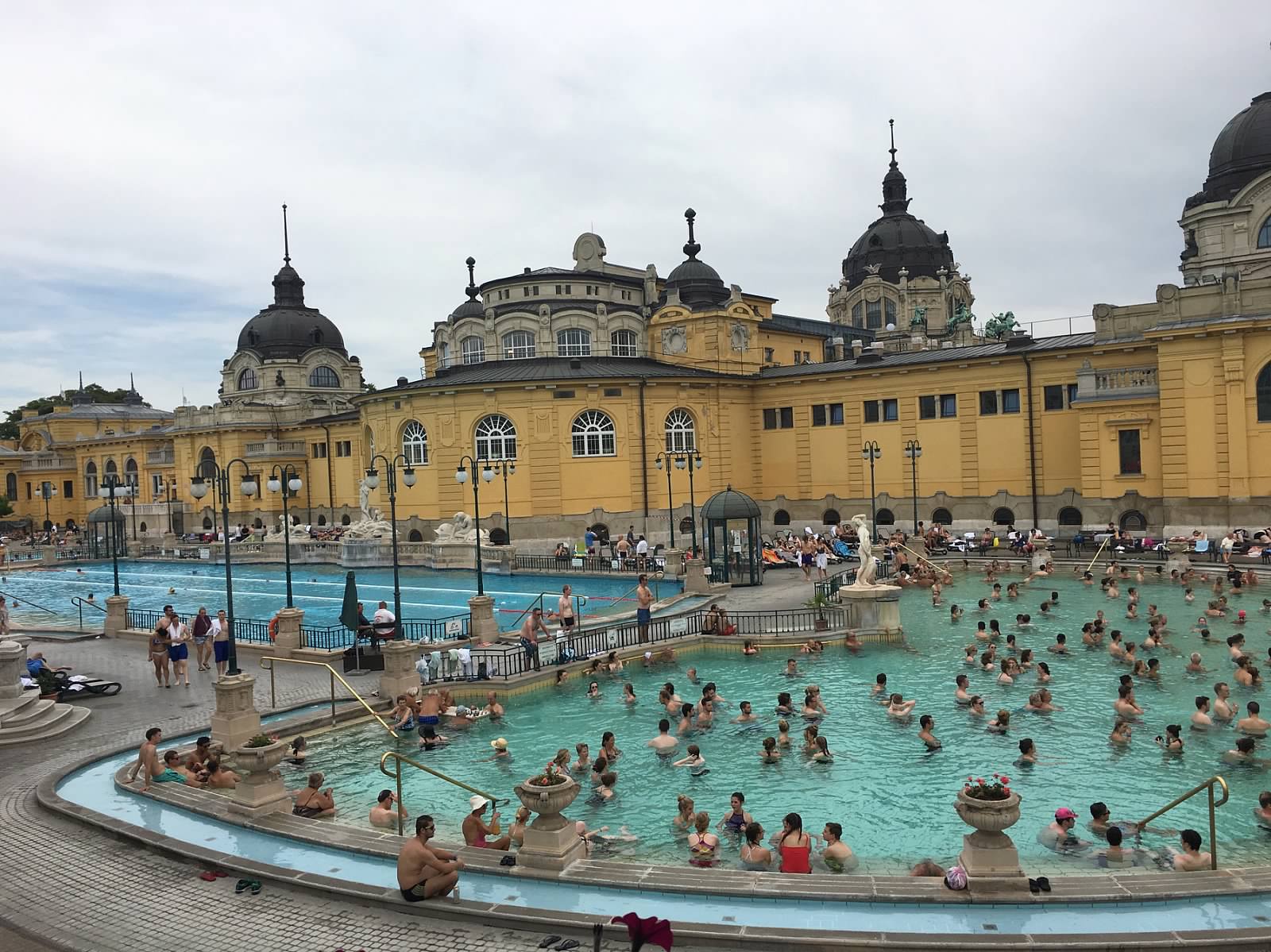 The following morning, we decided to try the public baths. Budapest is built on top of a network of 125 thermal springs. Since Roman times, the city has collected this hot water into large baths for the public. A single entry fee entitles visitors to spend the day hopping from one pool to the next. The temperatures range from a cool 70 degrees Fahrenheit to a scalding 170.
The following morning, we decided to try the public baths. Budapest is built on top of a network of 125 thermal springs. Since Roman times, the city has collected this hot water into large baths for the public. A single entry fee entitles visitors to spend the day hopping from one pool to the next. The temperatures range from a cool 70 degrees Fahrenheit to a scalding 170.
We chose Szechenyi, one of the largest public baths in Europe. Sydney splashed around in the cooler water, while Nolan and I took turns testing out the super-hot waters and saunas. Our little paddler was so happy that she was reluctant to get out of the warm soak.
By evening, our appetites returned. We made good use of them at Halaszbastya, one of the top-rated TripAdvisor restaurants in Budapest. We dined in a private corner of a medieval palace overlooking the skyline.
The dishes were tasty and the setting was incredible. While savoring every bite, we gazed out the window at the famous Budapest castles and monuments. And we vowed to return one day to this beautiful city.
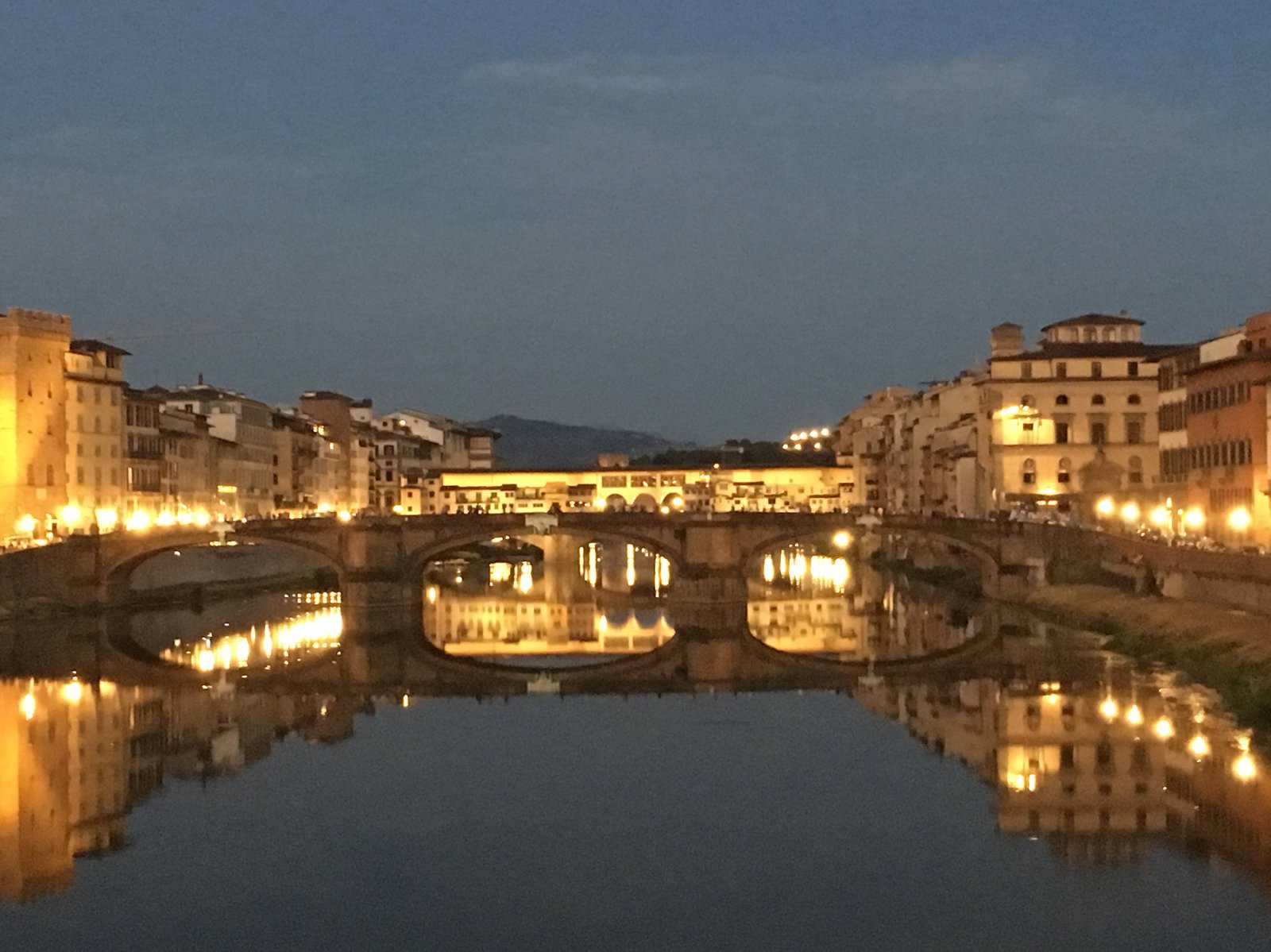 BOLOGNA
BOLOGNA
The next morning, we headed back to the airport for what should have been a short trip to Bologna, Italy. We had expected to arrive in the capital of the food-rich, historic Emilia-Romagna region of the country before noon. After a seven-hour flight delay, we arrived at our rental apartment in Bologna around midnight.
We were starving and exhausted. While Nolan entertained Sydney, I went out to forage for food. Although most shops and restaurants were closed, down the block from our apartment I saw a glimmer of hope. To be more precise, it was an illuminated pizza sign.
Inside, I asked for an English menu. The men behind the counter looked at me quizzically and shook their heads. "Espanol?" – Spanish – I asked. They nodded enthusiastically. I greeted them with "Hola!" and proceeded to order their most popular pizza – whatever they suggested – to go.
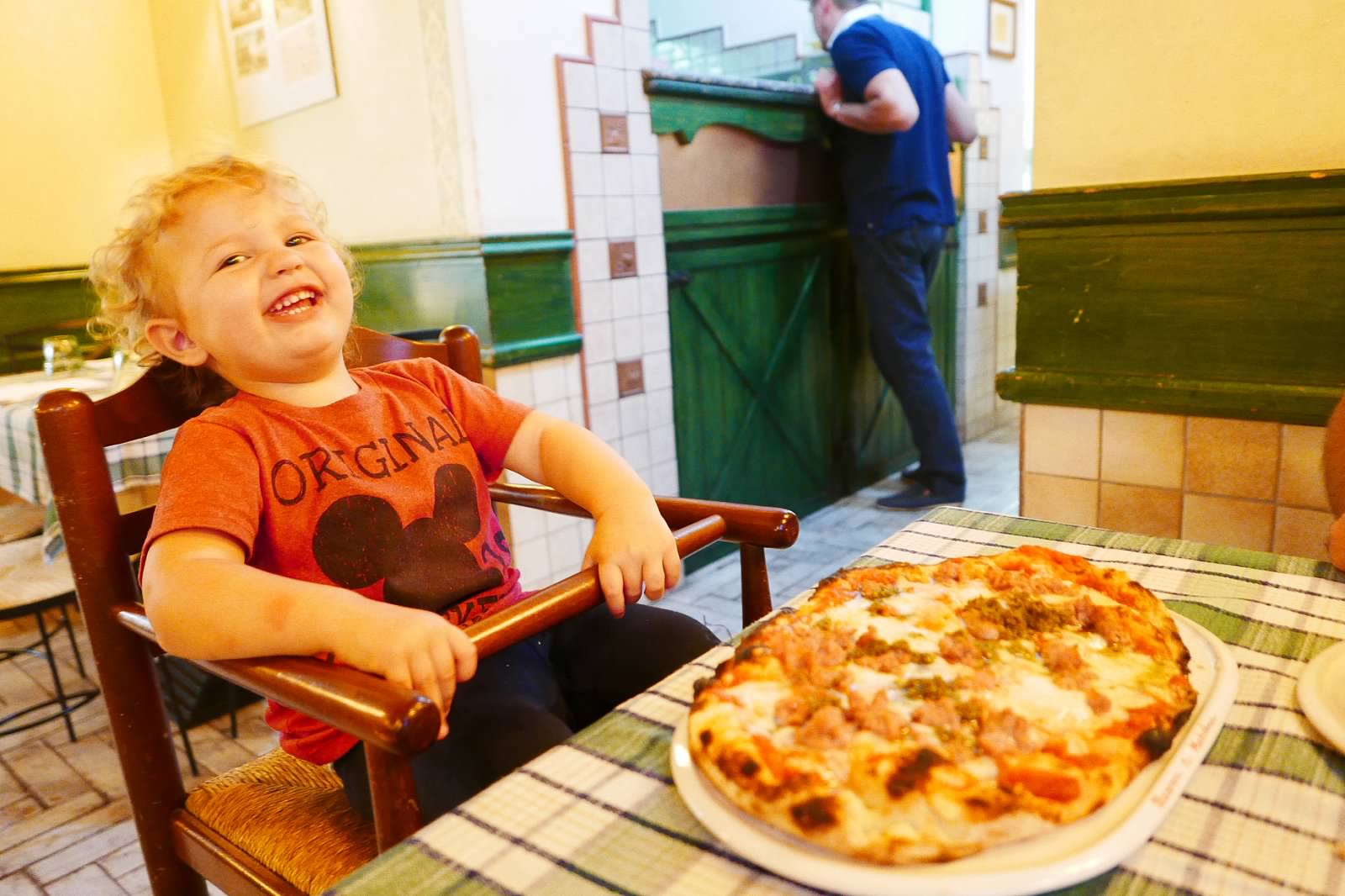 At our apartment, we opened the pizza box. A plume of steam punched us in the faces. When it cleared, we looked down to find a pizza covered in anchovies. We groaned.
At our apartment, we opened the pizza box. A plume of steam punched us in the faces. When it cleared, we looked down to find a pizza covered in anchovies. We groaned.
Ravenous, I disregarded the tiny fish, which I usually would have carefully picked off, and took a bite. The thin crust was crispy and caramelized on the bottom, but still soft and doughy on top. The sauce was complex and sweet - not from sugar but from fresh tomatoes.
Those anchovies that I had feared? They added a subtle saltiness to the divine slice.
We couldn't believe our good luck at stumbling upon such an amazing pizzeria on our first night in Bologna. We soon learned, however, that this was par for the course for Bologna. Indeed, over two weeks we ate some of the most superb meals of our lives. Thirty-month aged parmesan cheese here, fresh sliced mortadella ham there, and homemade pasta everywhere. The Bolognese know how to eat.
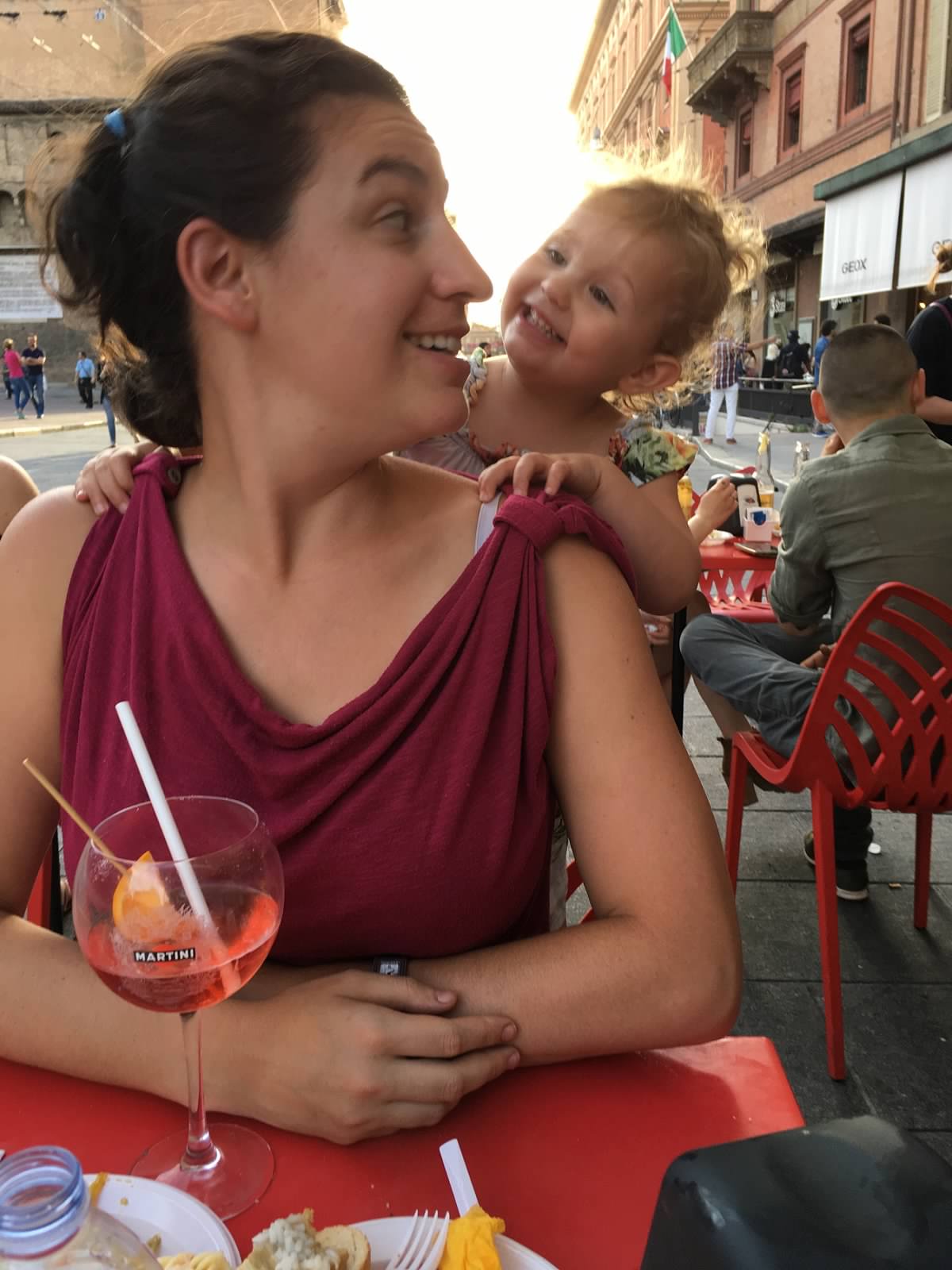 When we discovered aperitivos, we learned that Italian feasting can be affordable as well as scrumptious. An aperitivo is a happy hour that usually lasts from 6 to 9 p.m. and includes, for the price of a single drink, unlimited visits to a buffet of cold foods. In addition, most bars set out platters of freshly made pasta, pizza, roasted vegetables and crusty Italian bread.
When we discovered aperitivos, we learned that Italian feasting can be affordable as well as scrumptious. An aperitivo is a happy hour that usually lasts from 6 to 9 p.m. and includes, for the price of a single drink, unlimited visits to a buffet of cold foods. In addition, most bars set out platters of freshly made pasta, pizza, roasted vegetables and crusty Italian bread.
Taking advantage of this regional practice, our family of three wined and dined for cheap. Having spent most of our trip cooking and eating in rental lodging with kitchens, we could finally afford nights out.
Hoping to bring home a taste of our favorite culinary locale, I took a cooking class. While sipping chianti, I learned to roll out pasta by hand, slowly simmer meat ragout to savory perfection, and gently fold cheese-stuffed tortellini.
Between our morning croissants, afternoon gelatos and evening aperitivos, we strolled through the city's famous arched passageways. We sat on benches to watch hip college kids hurrying to their final exams at the University of Bologna, the world's oldest college. We visited the city library, the epicenter of town, where Sydney read her way through the English toddlers' collection.
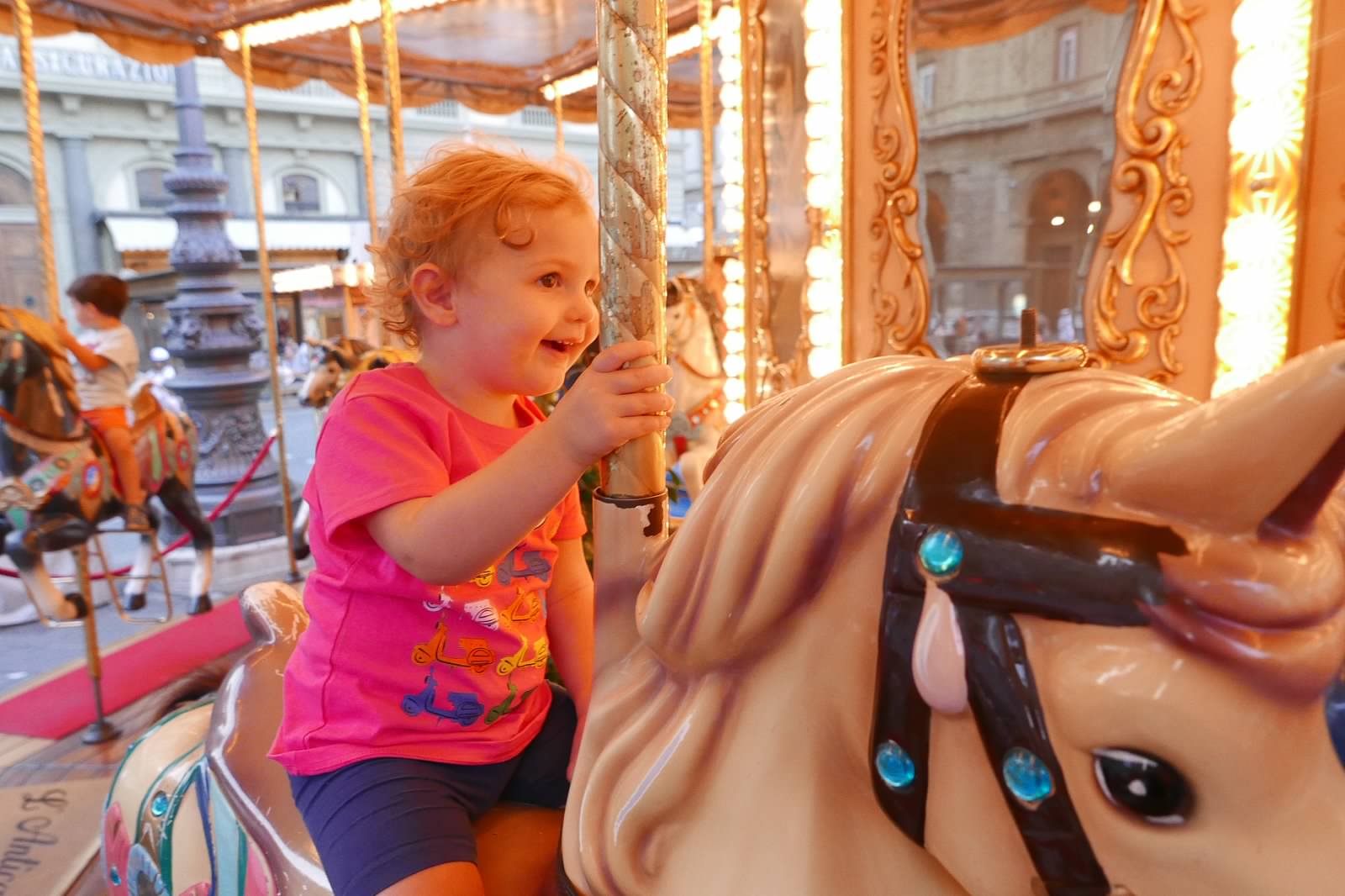 Touring the city's religious sites, we found the most interesting to be the Basilica of San Petronio, one of the world's largest churches. Construction on this cavernous building began in 1390. Bologna intended it to be the largest in the world, dwarfing even the Vatican's Saint Peter's Basilica. Pope Pius IV learned of these plans and, local tradition insists, immediately withdrew funding for San Petronio. Seven hundred years later, the basilica remains unfinished.
Touring the city's religious sites, we found the most interesting to be the Basilica of San Petronio, one of the world's largest churches. Construction on this cavernous building began in 1390. Bologna intended it to be the largest in the world, dwarfing even the Vatican's Saint Peter's Basilica. Pope Pius IV learned of these plans and, local tradition insists, immediately withdrew funding for San Petronio. Seven hundred years later, the basilica remains unfinished.
On a day trip, we took a 30-minute train ride to Florence. At the Uffizi, we stood in awe of Botticelli's "The Birth of Venus" and snapped pictures of Michelangelo's "Doni Todo." Later, we visited Michelangelo's statue of David,marveling at the detail of the statue's muscles and veins; and ended the day with a carousal ride – Sydney's first – in the center of town. When we were dizzy from repeated cycles on the merry-go-round, we left for the train station and headed to Rome.
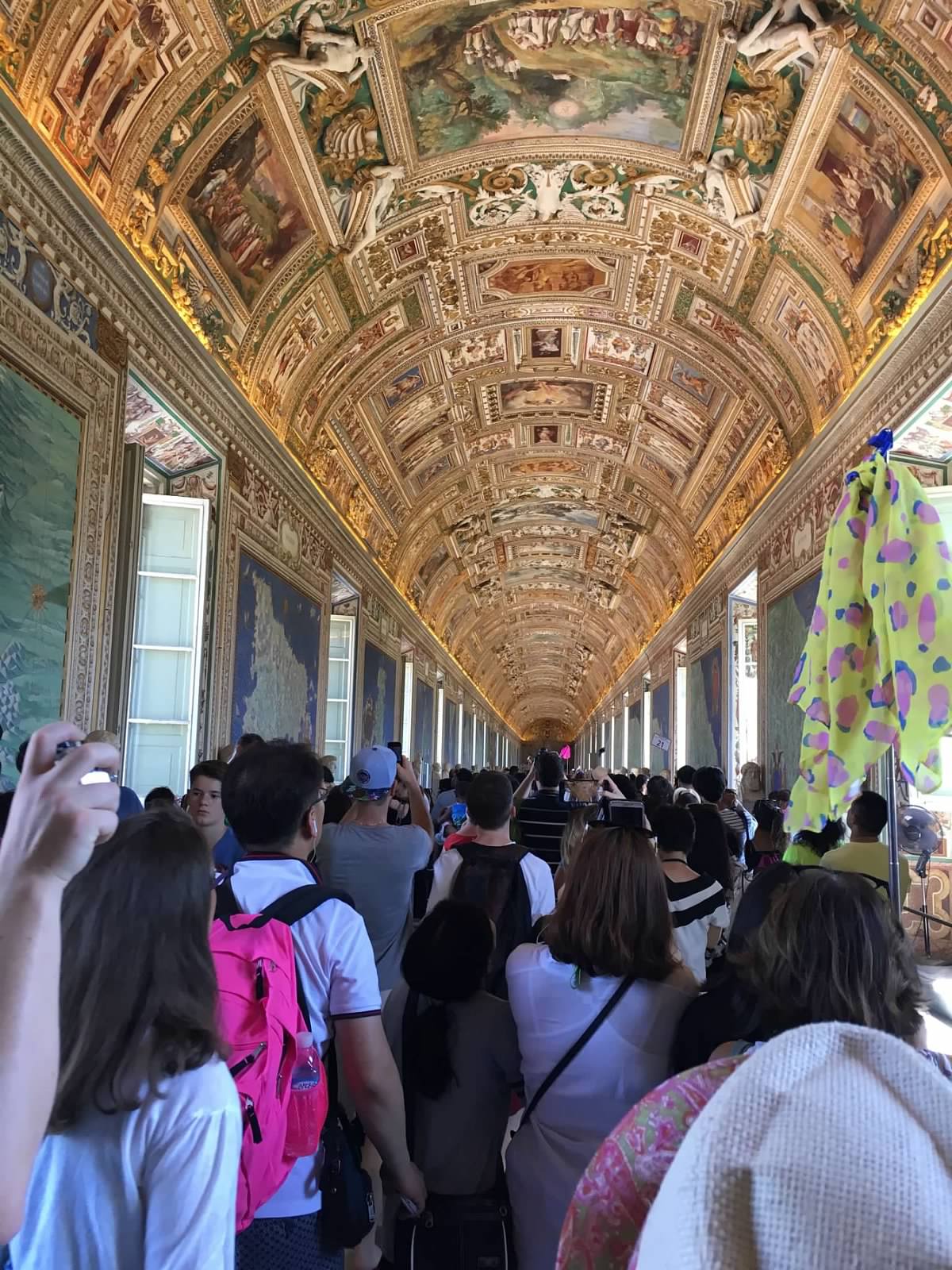 ROME
ROME
We spent the last few days of our round-the-globe circuit touring some of the world's oldest and most famous sites.
At the Vatican, we saw the ceiling of the Sistine Chapel, decorated with Michelangelo's remarkable frescoes depicting nine scenes from the book of Genesis. Sydney loved the Vatican Museum's Hall of Animals. Established by Pope Pius VI at the end of the 18th century, this "stone zoo" contains marble sculptures of everything from suckling puppies to roaring lions.
On another day, we explored Rome's ancient archeological ruins. We climbed the stairs to the top floor of the Colosseum, which was built during the first century A.D. The Colosseum could hold more than 60,000 people, who would come to watch gladiators fight one another and wild animals.
With a little imagination, we were able to picture people clad in togas and sandals scurrying around the Roman Forum, a complex of ruins dating to the 7th century B.C.
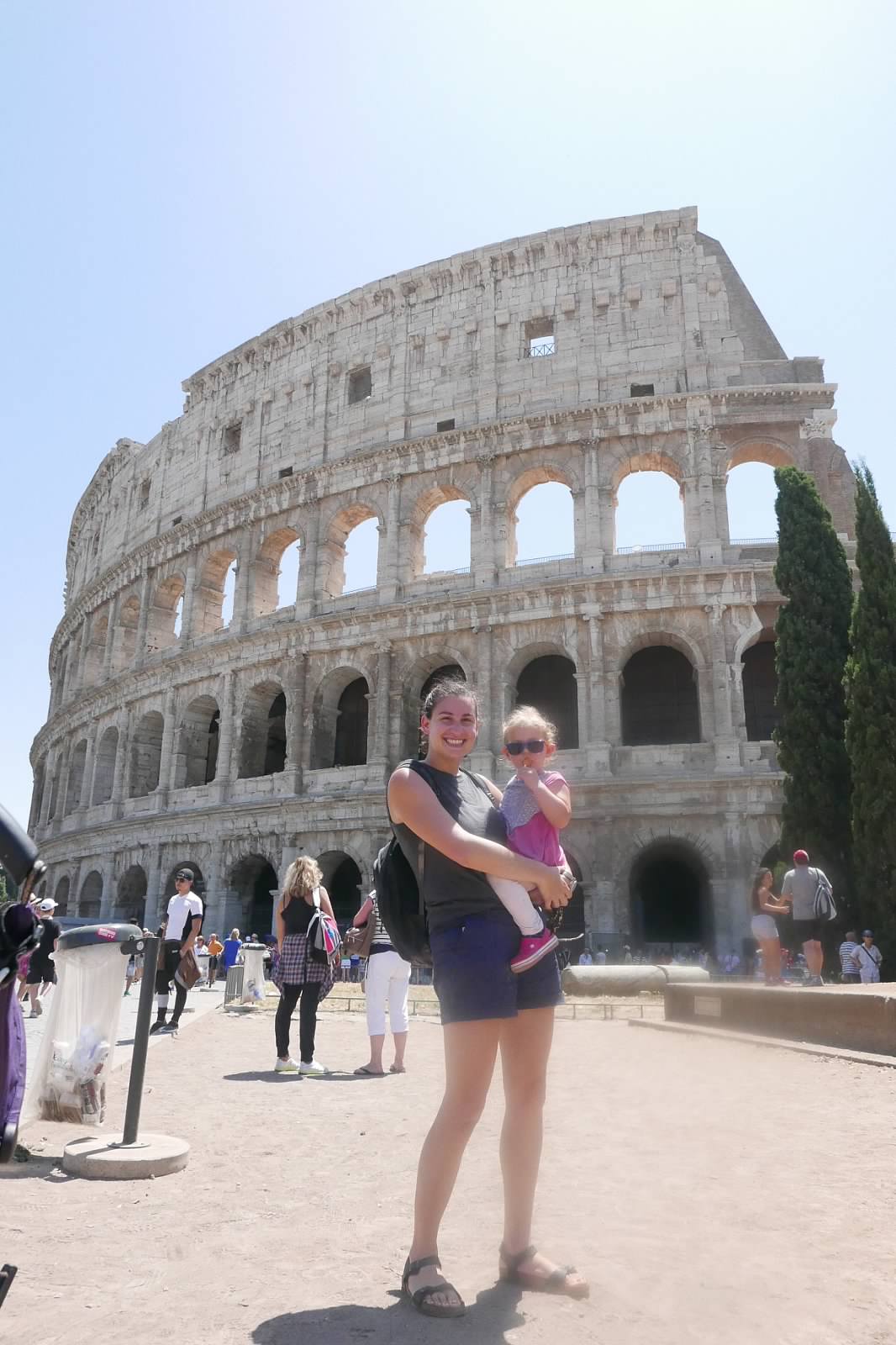 On our last night in Rome, we sat in a park and enjoyed cones filled with homemade gelato. The next morning, we were scheduled to board a flight back to the United States. Licking our melting ice cream, we reflected on all that we had seen and accomplished during the past five months.
On our last night in Rome, we sat in a park and enjoyed cones filled with homemade gelato. The next morning, we were scheduled to board a flight back to the United States. Licking our melting ice cream, we reflected on all that we had seen and accomplished during the past five months.
Starting in Argentina and moving on to Chile, Australia, Indonesia, Japan, Israel, Hungary and Italy, we had experienced a variety of cultures, seen some of the world's most impressive sites, tasted a wealth of cuisines, and met an assortment of memorable characters.
We had watched our daughter blossom from a shy, quiet baby into a confident, curious toddler. As for Nolan and me, this journey filled us with appreciation for the diversity of culture and tradition from country to country. We were met with kindness everywhere we went, which showed us that people across the globe are much more alike than they are different.